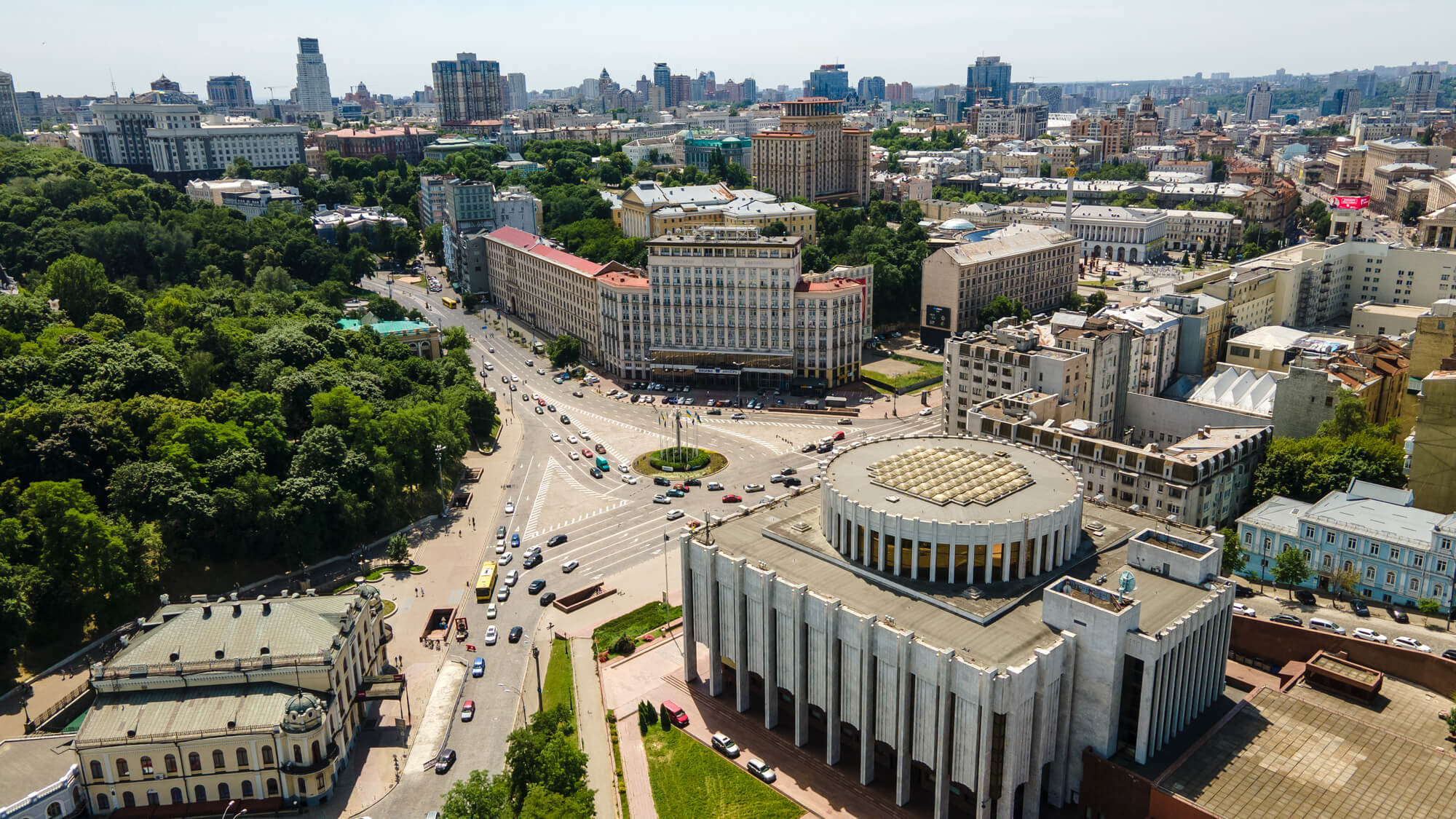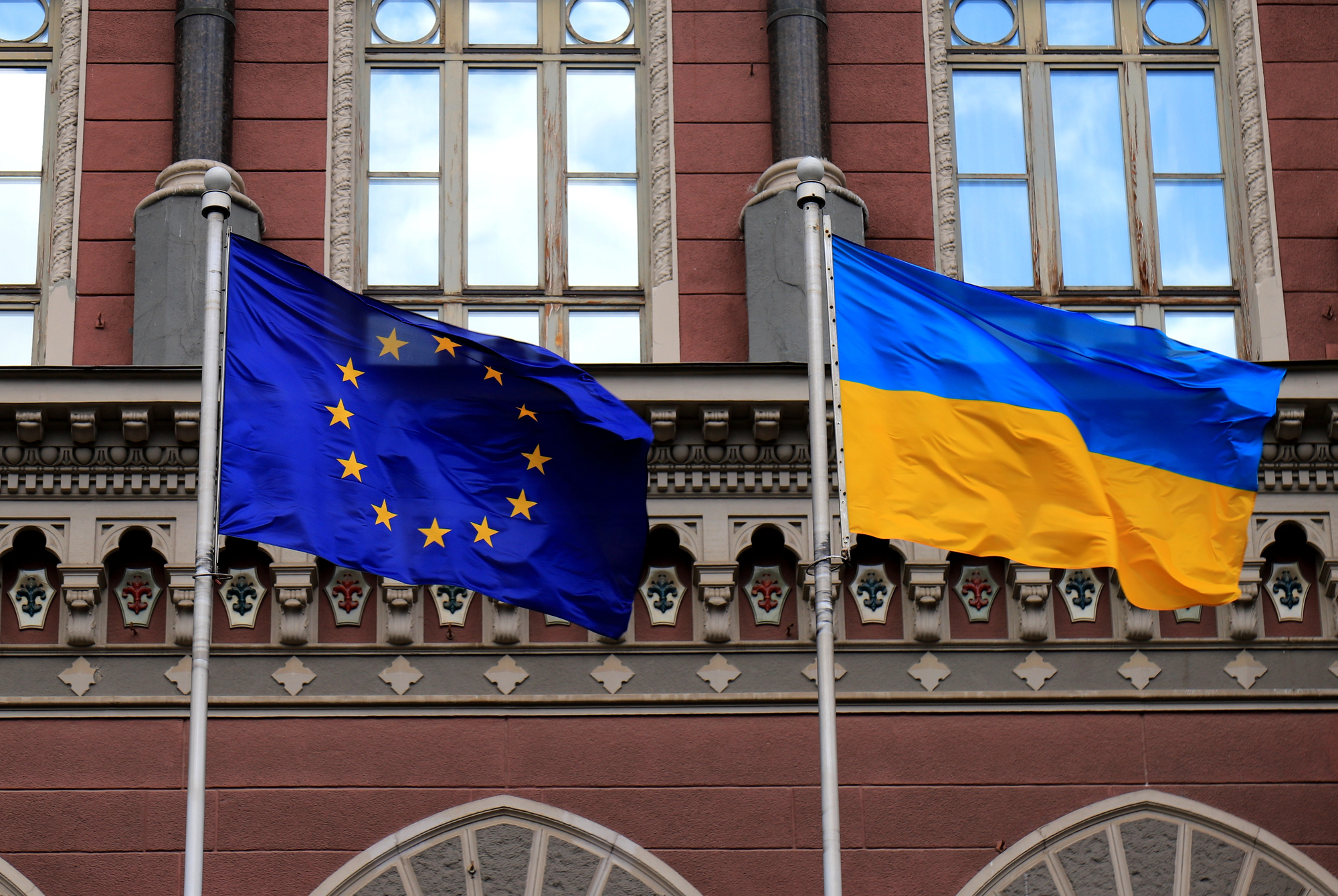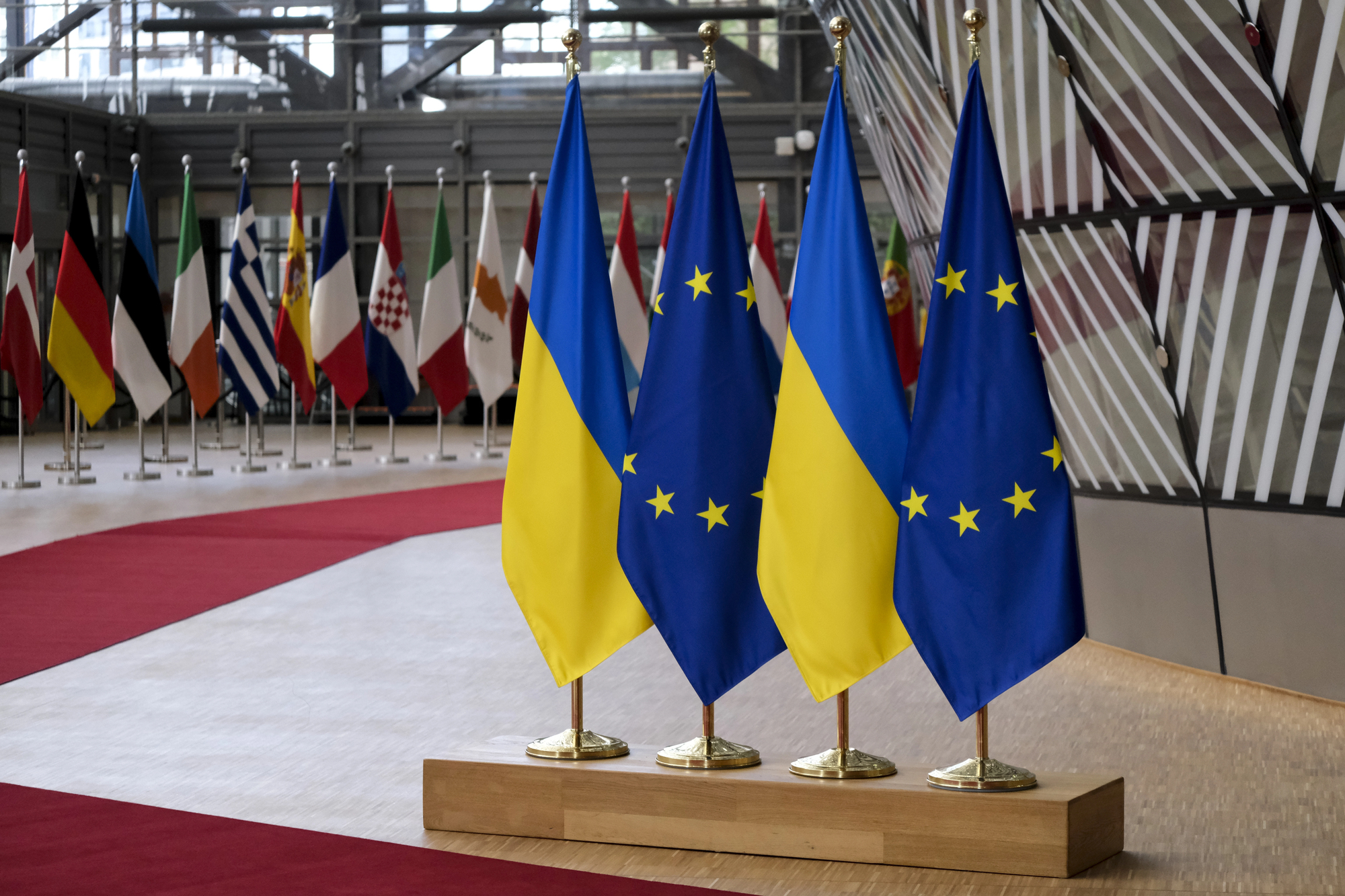The EU can help Ukrainian businesses already now. First, by extending its job retention instrument (SURE) to Ukraine. And second – by financing a voucher scheme that would boost demand for products of Ukrainian companies, help them enter European markets, introduce technological upgrades, including digitalization. Of course, these are not the only possible instruments but they already exist and can be extended to Ukraine rather fast.
The World Bank recently estimated that Ukrainian GDP might fall by close to 45% in 2022. The Ukrainian Minister of Finance estimated, based on the decline in receipts of taxes and social contributions, that around 30% of the economy was not working or was working at reduced capacity. The NGO Business Community Club Ukraine (BCC) reported that the business has almost completely stopped in the regions most affected by the war, and that in the less affected western Ukraine about 40% of businesses did not work and another 40% suffered losses and were running out of strength. However, after the first shock, the businesses in less affected regions are now trying to save jobs and find new markets and niches [1].
The Ukrainian government responded to this situation by temporary tax reductions[2], a freeze on loan and mortgage repayments, subsidies and interest-free loans to farmers to ensure sowing of grains, and by a programme to relocate enterprises, together with their equipment and workforce, from the regions most affected by the war to relatively safer parts of the country[3].
Stronger support is needed for businesses to help them sustain through the economic hardship caused by the war. Yet the international support to Ukraine is presently focused on emergency humanitarian aid, supply of military equipment, macro financial assistance and providing for refugees. Emerging plans for post-war recovery seem to prioritise rebuilding of damaged infrastructure over support for economic recovery[4].
However, the foundations for a rapid post-war economic recovery must be laid already now. The businesses, even those which are currently not able to operate at all, need support to preserve their economic capacity and jobs. Large-scale bankruptcies and layoffs need to be prevented. Preserving the existing jobs and business entities would considerably shorten the time needed to resume normal levels of economic activity after the end or localization of military operations. In addition, support to the economy would reduce the economic migration from Ukraine and facilitate a quick return of displaced persons to their workplaces.
This paper puts forward two proposals on how the EU could use their existing economic support mechanisms to help the Ukrainian business sector to survive through the war and the immediate post-war period:
- Include Ukraine in the financial support for job retention schemes, provided by the SURE instrument,
- Include Ukrainian businesses among the beneficiaries of SME voucher schemes operating in EU Member States.
As the proposals are based on existing EU mechanisms, it should be easy to upgrade and administer them to include Ukraine as a beneficiary.
[1] Based on the Letter of Appeal by the BCC dated March 14, 2022, and communication with the BCC.
[2] The corporate income tax was replaced by a single 2% turnover tax, individual private entrepreneurs were exempt from social security contributions for themselves and employees who have been mobilized, owners of land in areas where fighting is going on were exempt from the land tax, the excise duty on fuels was reduced to 0 and the VAT rate on imports of fuel was reduced from 20% to 7%.
[3] As of 28 March, 98 enterprises had already moved to western Ukraine, while another 375 were in relocation.
[4] See, for example, the CEPR publication ‘A blueprint for the reconstruction of Ukraine’, April 2022.
Setting up an EU-funded job retention scheme for Ukraine
Proposal:
Top-up the EU’s SURE fund [5] and provide grants to the Ukrainian government to set up a job retention scheme. Provide technical assistance for setting up the rules and administration of the scheme, adjusted to the present situation in the country [6].
Rationale:
Job retention schemes are subsidies for wage costs of employees who are unable to work during the economic distress. Subsidies are paid to enterprises which are coping with reduced demand and revenues and would normally resort to laying off their employees to reduce costs. Subsidies thus enable distressed enterprises to keep their employees on the payroll but reduce their paid working hours or send them on a temporary paid leave.
Care must be taken that support is also provided to self-employed persons. As they normally do not have an employment contract with themselves, they are not covered by conventional employment retention schemes which target only those who are formally employed with an employer. One possible solution is to provide them with a basic income commensurate with the net minimum wage[7].
Job retention schemes bring multiple benefits. They provide direct income support to employees who would otherwise likely be laid off and depend on social assistance. They enable the enterprises to keep their existing skilled and trained workforce and to re-deploy workers as soon as there is an opportunity to increase their business operations, even if only temporarily. By this, the schemes prevent the development of a situation, known as labour market hysteresis, when workers are laid off but then not re-employed until the enterprises are certain that the economic risks are mitigated. On the macroeconomic level, job retention obviously reduces the increase in unemployment and the level of economic uncertainty. In the context of war, job retention also supports the return of internally displaced persons and refugees to their place of residence and work as soon as circumstances allow.
The arguments on the importance of job retention are not purely theoretical. In a survey of over 1000 Ukrainian enterprises with foreign capital, 63% said that they continued to pay full salaries to their employees – even though only 17% of all surveyed companies were still working full time and at full capacity. This shows the value that companies place on preserving the jobs and keeping the workers employed during the hardship. The Ukrainian government has also taken some measures to support continued employment. It allowed for temporary suspension of employment contracts or a downtime with wages paid at the level of at least two thirds of the employee’s average wage. However, there is yet no financial support for private sector employers who decide to keep their non-working employees on the payroll, except for UAH 6,500 (around EUR 190) for employees of individual entrepreneurs in war-affected areas for whom social contributions were paid, and a two-month compensation in the same amount for hiring internally dispaced persons.
EU Member States used job retention schemes extensively during the recent economic downturn caused by the COVID-19 pandemic and lockdowns. They may well be the single most important policy measure that prevented massive unemployment and enabled a speedy economic recovery. Recognizing the effectiveness of such schemes, the EU set up a financing mechanism of 100 billion EUR, known as SURE, which provided loans to Member States for financing their national schemes[8].
The European Commission reported that employment retention schemes financed by SURE covered around 31 million people and 2.5 million enterprises in 2020, which represented 30% of total employment and a quarter of all enterprises in beneficiary Member States. Small firms have been the primary beneficiaries of SURE support to the enterprises. Considering that several Member States partly or fully financed job retention schemes from their national budgets, the real impact of these measures was even stronger.
Comparison with EU Member States allows us to provide a rough estimate of the cost of a SURE-type job retention scheme for Ukraine. The rate of coverage of people and enterprises by SURE-funded measures differed a lot between Member States, based on their labour market situation and the extensiveness of their measures. To estimate the potential cost of a SURE-type support for Ukraine, where the coverage will need to be very broad, we shall use the Member State with the highest coverage as a benchmark. In 2020, the highest coverage by SURE-financed measures was achieved in Slovenia, amounting to 60% of total employment (including the self-employed) and 80% of all enterprises. This was financed by 1.1 billion EUR provided by SURE [9]. Considering the much larger population of Ukraine, and the much lower level of officially reported average wage, we arrive at a rough estimate that the annual cost of a SURE instrument for Ukraine, with similarly broad coverage, would be between 4.5 and 5 billion EUR [10]. This corresponds to the remaining not yet allocated funds of the SURE facility at the end of 2021.
[5] The EU’s financial instrument SURE (Support to mitigate Unemployment Risks in an Emergency) was set up at the outbreak of the COVID-19 pandemic to finance job retention schemes in Member States
[6] Technical assistance could best be provided by one of the Member States which were more successful in containing unemployment hikes during the pandemic. Among the Member States supporting the U-LEAD programme, these are Germany, Denmark, Poland and Slovenia.
[7] In the EU, a third of SURE financing was spent on supporting the self-employed, with considerable difference between Member States
[8] SURE was funded by ‘social bonds’ issued by the EU on international financial markets. The interest rates on these EU bonds differ by issue but are all lower than 1%. Loans granted from SURE to Member States have an average maturity of 14.5 years, and the interest rate is, on average, 0.63 percentage point lower than what Member States presently pay on their new sovereign bond issues. This implies that financial conditions of potential SURE loan to Ukraine could be favourable.
[9] For details on the approach taken in Slovenia during COVID-19 lockdowns, see the U-LEAD report ‘Helping the economy survive through an external shock’ from March 2022.
[10] The calculation was made on data for Slovenia and Ukraine in 2020 and 2021, i.e. the years for which official statistics on wages are already available. Using the average annual ECB exchange rate for UAH, the ratio between the average wage in Ukraine and Slovenia was 0.19 in 2020 and 0.21 in 2021. The ratio of population of Ukraine to Slovenia is 21 (we used the population ratios instead of employment due to issues with employment statistics comparability). Applying these ratios to 1.1 bn spent by Slovenia in 2020 gave us point estimates of the cost for Ukraine of 4.5 bn EUR (on 2020 data) and 5 bn EUR (on 2021 data). More precise estimations based on current data can be done if the initiative is taken forward by the EU.
Open SME voucher schemes for Ukrainian businesses
Proposal:
Use existing or adapted SME voucher schemes to support cooperation between EU and Ukrainian businesses and provide EU-level financial support. Provide assistance to Ukrainian businesses for participation in such schemes.
Rationale:
Vouchers are a commonly used instrument of SME policy. They partly or fully cover the costs of SME’s activities which the policymakers choose to support. Many different voucher schemes are presently in operation in the EU at the national, regional, local and cross-border cooperation levels. A recent sampling found that the value of vouchers was less than 10,000 EUR in half of the surveyed schemes, and higher than 20,000 EUR in only 13% of all cases. The value of course depends on the purpose and scope of the vouchers and the cost of supported activities [11].
Our proposal is to adapt or enhance some of the existing schemes with U-vouchers to support cooperation between SMEs operating in the EU and their existing or new partners from Ukraine, with the primary aim to support:
- short-run cooperation, i.e., provision of goods and services,
- long-run cooperation, i.e., including Ukrainian businesses into international cooperation networks and value chains,
- joint research, development, innovation and digitalization projects.
Technically, U-vouchers would still be paid to beneficiaries residing in the EU, to simplify the administering of the schemes, but with a requirement that they be used to finance cooperation with a Ukrainian business partner. Eligible Ukrainian partners should include natural person entrepreneurs and own-account workers, i.e., the self-employed, given their large share in the economy [12].
[11] For a partial overview of voucher schemes in the EU, see the April 2021 policy brief ‘Vouchers for the competitiveness of SMEs’, and the 2019 EC report ‘Voucher schemes in Member States’.
[12] According to the Ukrainian State Statistics Service (Ukrstat), 15% of all employed persons in 2021 were own-account workers (almost 30% in rural areas). Natural person entrepreneurs were 81% of all business entities active in 2020.
Examples of commonly used types of vouchers that could be used to support cooperation with Ukrainian partners include:
- Internationalisation vouchers – they are typically provided to cover the cost of product quality certification, market research, patent and trade-mark registrations, participation in international fairs and other promotional activities. U-vouchers could be used, for example, for EU enterprises that would support Ukrainian partners in their adaptation to EU standards and market expectations, engage in joint promotional activities in international markets, provide or commission market intelligence etc.
- Clustering and value-chain creation vouchers – these vouchers support SME activities for networking, clustering and creation of export-oriented value-chains. Their application to supporting cooperation with Ukrainian business partners should be rather straightforward and simple.
- Digitalization vouchers – interesting examples include vouchers supporting setting up an e-commerce platform, developing and acquiring digital tools, investing in cyber security systems and similar. U-vouchers could be used to purchase such services from Ukrainian partners or to provide such specialist services and knowledge to them.
- Research, innovation and creativity vouchers – they are typically used to stimulate cooperation between an enterprise and a research institution, to jointly work on a research or innovation project. They may also be used for purchasing services from enterprises of the ‘creative industry’. In the context of cooperation with Ukraine, they could be used to finance cooperation between two business partners on joint research and innovation projects.
- Consultancy and training vouchers – they stimulate acquisition of specific skills by SMEs, for example on digitalization or internationalisation, and to commission external expert advice on transformation of different aspects of the business model. In the context of cooperation with Ukraine, such vouchers could also be used to finance EU enterprises that would act as knowledge and skills providers to their Ukrainian partners.
The above list is intended to show the wide range of possible options, but other creative solutions may emerge in consultations with the Ukrainian stakeholders and the EU business sector. For example, the BCC is currently engaged in supporting enterprises with information, consulting and networking assistance, including developing a model for creating an Agro-Food cluster in the Lviv region. All such activities could be supported by business partners from the EU and partly financed through voucher schemes.
The U-voucher schemes would likely create benefits beyond the immediately supported activities. Voucher schemes incentivize enterprises towards activities that might not take place otherwise, but once started, the activities may continue and have a long-run impact on beneficiary enterprises. At the same time as providing direct support to beneficiaries, they also increase the demand for specialist services that the vouchers are used to pay for. This joint effect on both recipients and their partners is exactly the idea behind the proposed U-voucher schemes. They may help overcome the reluctance on the part of EU enterprises to seek partners in Ukraine in the current circumstances, create revenue and income flows to Ukrainian partners, and trigger long-term cooperation between partners. They would also contribute to redirecting the focus of Ukrainian businesses towards the EU markets and partners, thereby reinforcing the country’s European perspective.
Again, the arguments for supporting international cooperation with Ukrainian businesses are not just theoretical. The Estonian Institute of Marketing, in cooperation with the Ukrainian Entrepreneurship and Export Promotion Office, has already launched a project to support businesses that can deliver services remotely to foreign companies. The goal is to help Ukrainian companies to establish cooperation with international partners in EU markets and for foreign companies to receive services from qualified specialists in Ukraine.
Providing voucher schemes on a broader scale would require institutional support and coordination from the EU. The key element of the EU level support to Member States’ voucher schemes is that they are, normally, exempted from state-aid rules. Financial support from the structural funds is also sometimes provided. The EU would need to extend the state-aid exemption to U-voucher schemes, and some EU-level financing might also be needed to support the governments which will decide to offer U-vouchers. On the Ukrainian side, strong promotion of the schemes will be needed as well as assistance to SMEs with their applications. This can be ensured by the Entrepreneurship and Export Promotion Office in cooperation with business associations.
Conclusions
From the economic point of view, a military aggression is a brutal external shock for economic activity. Considering the shock as temporary, the main goal of the economic policymakers and international economic support at this time should be to help economic agents survive through the shock and retain as much capacity and jobs as possible. This report puts forward two proposals on how the EU could use their existing economic support mechanisms to help the Ukrainian business sector to survive through the war and the immediate post-war period:
- Include Ukraine in the financial support for job retention schemes, provided by the SURE instrument,
- Include Ukrainian businesses among the beneficiaries of SME voucher schemes operating in EU Member States.
As the proposals are based on existing EU mechanisms, it should be easy to upgrade and administer them to include Ukraine as a beneficiary. Refinements of technical modalities of support could be worked-out in a dialogue between the EU and Ukrainian stakeholders, i.e., the Cabinet of Ministers and business associations. But first, a political-level decision to act in this direction must be taken.
This publication has been produced with the assistance of the European Union and its member states Germany, Poland, Sweden, Denmark, Estonia and Slovenia. The contents of this publication are the sole responsibility of its authors and can in no way be taken to reflect the views of the U-LEAD with Europe Programme, the government of Ukraine, the European Union and its member states Germany, Poland, Sweden, Denmark, Estonia and Slovenia.
U-LEAD with Europe: Local Empowerment, Accountability and Development Programme is a multi-donor action of the EU and its member states Germany, Poland, Sweden, Denmark, Estonia and Slovenia to support Ukraine on its path to strengthening local self-government. U-LEAD promotes transparent, accountable and responsive multi-level governance in Ukraine and empowers municipalities.
Attention
The authors do not work for, consult to, own shares in or receive funding from any company or organization that would benefit from this article, and have no relevant affiliations



